Making the Library Accessible for All
Practical Guides for Librarians
 About the Series
About the Series
This innovative series written and edited for librarians by librarians provides authoritative, practical information and guidance on a wide spectrum of library processes and operations.
Books in the series are focused, describing practical and innovative solutions to a problem facing todays librarian and delivering step-by-step guidance for planning, creating, implementing, managing, and evaluating a wide range of services and programs.
The books are aimed at beginning and intermediate librarians needing basic instruction/guidance in a specific subject and at experienced librarians who need to gain knowledge in a new area or guidance in implementing a new program/service.
 About the Series Editor
About the Series Editor
The Practical Guides for Librarians series was conceived by and is edited by M. Sandra Wood, MLS, MBA, AHIP, FMLA, Librarian Emerita, Penn State University Libraries.
M. Sandra Wood was a librarian at the George T. Harrell Library, The Milton S. Hershey Medical Center, College of Medicine, Pennsylvania State University, Hershey, PA, for over 35 years, specializing in reference, educational, and database services. Ms. Wood worked for several years as a Development Editor for Neal-Schuman Publishers.
Ms. Wood received a MLS from Indiana University and a MBA from the University of Maryland. She is a Fellow of the Medical Library Association and served as a member of MLAs Board of Directors from 1991 to 1995. Ms. Wood is founding and current editor of Medical Reference Services Quarterly , now in its 35th volume. She also was founding editor of the Journal of Consumer Health on the Internet and the J ournal of Electronic Resources in Medical Libraries and served as editor/co-editor of both journals through 2011.
Titles in the Series
1. How to Teach: A Practical Guide for Librarians by Beverley E. Crane.
2. Implementing an Inclusive Staffing Model for Todays Reference Services by Julia K. Nims, Paula Storm, and Robert Stevens.
3. Managing Digital Audiovisual Resources: A Practical Guide for Librarians by Matthew C. Mariner.
4. Outsourcing Technology: A Practical Guide for Librarians by Robin Hastings.
5. Making the Library Accessible for All: A Practical Guide for Librarians by Jane Vincent.
Making the Library Accessible for All
A Practical Guide for Librarians
Jane Vincent
Practical Guides for Librarians, No. 5
ROWMAN & LITTLEFIELD
Lanham Boulder New York Toronto Plymouth, UK
Published by Rowman & Littlefield
4501 Forbes Boulevard, Suite 200, Lanham, Maryland 20706
www.rowman.com
10 Thornbury Road, Plymouth PL6 7PP, United Kingdom
Copyright 2014 by Rowman & Littlefield
All rights reserved . No part of this book may be reproduced in any form or by any electronic or mechanical means, including information storage and retrieval systems, without written permission from the publisher, except by a reviewer who may quote passages in a review.
British Library Cataloguing in Publication Information Available
Library of Congress Cataloging-in-Publication Data
Vincent, Jane.
Making the library accessible for all : a practical guide for librarians / Jane Vincent.
pages cm. (Practical guides for librarians ; no. 5)
Includes bibliographical references and index.
ISBN 978-0-8108-9146-3 (pbk. : alk. paper) ISBN 978-0-8108-9147-0 (ebook) 1. Libraries and people with disabilities. 2. Libraries and people with disabilitiesUnited States. 3. Self-help devices for people with disabilities. 4. Assistive computer technology. I. Title.
Z711.92.H3V57 2014
027.663dc23 2013047558
 The paper used in this publication meets the minimum requirements of American National Standard for Information SciencesPermanence of Paper for Printed Library Materials, ANSI/NISO Z39.48-1992. Printed in the United States of America
The paper used in this publication meets the minimum requirements of American National Standard for Information SciencesPermanence of Paper for Printed Library Materials, ANSI/NISO Z39.48-1992. Printed in the United States of America
For the students of the University of Michigan School of Information
You are the shining future of our profession
Preface
Your library needs and wants to attract more patrons with disabilities.
Odds are, you bought or borrowed this book because you were concerned about meeting legal requirements or perhaps because you have already seen some people with obvious disabilities come to your library and you want to provide them with excellent service. It is probably not yet second nature for you to think about the benefits of providing an environment so that your library can actively attract many patrons with disabilities. These benefits may include, but not be limited to, the following.
 Fresh Perspectives
Fresh Perspectives
Every library can use a new infusion of patrons. Are you having problems attracting enough attendees to the computer training classes that your library board president insists you conduct? Local people with disabilities may not have thought to seek training at their library and may welcome the opportunity. Are people complaining that your programming is getting repetitious? Asking disabled patrons for suggestions on what films to show at a disability film festival and having them lead discussions afterward may expose your community to novel ideas and perspectives. Are you lobbying to your city council for a new bus stop in front of the library? Collecting affidavits of support from wheelchair users will likely be very helpful.
 Impetus
Impetus
In all likelihood, most libraries have at least one thing that many patrons, perhaps even staff, find annoying but not enough to formally complainsay, a large planter that people keep walking into. As you start to review your library for compliance with the Americans with Disabilities Act (ADA) requirements for architecture (see chapter 4), you realize that the planter protrudes more than 4 inches into the walkway and is therefore out of compliance. Planter gets moved. Your library immediately becomes more ADA compliant. Fewer shins are bruised. Everyone is happy.
 Enthusiasm
Enthusiasm
The most important thing to remember is that patrons are showing up not because they have a disability but because you have a library, and libraries have much to offer. If patrons find your library to be accessible on top of everything else that it provides, they are likely to spread the word among their peers and colleagues, resulting in an increased stream of satisfied patrons and an enhancement to the librarys positive reputation.
It is easy to assume, for example, that blind people are not interested in coming to public libraries. Computer accessibility expert and library enthusiast Marc Sutton (2013, personal correspondence) provides an explanation to the contrary:
I am a blind person who has loved reading since I picked up my first braille book at the age of 5. It has always been a challenge to find reading material in a nonprint format. There are a variety of sources for accessible reading material such as the National Library Service for the Blind and Physically Handicapped, commercial audio and electronic book companies. However, their offerings fall far short of being able to provide access to even a small percentage of published print materials. Public libraries can provide an invaluable resource for blind patrons by helping streamline all of these sources, providing accessible reference materials, and promoting the accessibility of online sources of reading material.
Next page
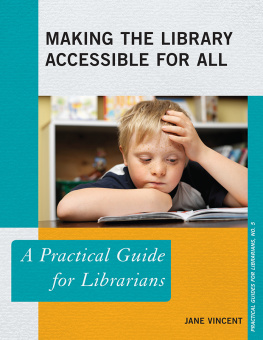

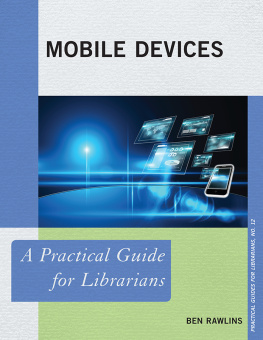
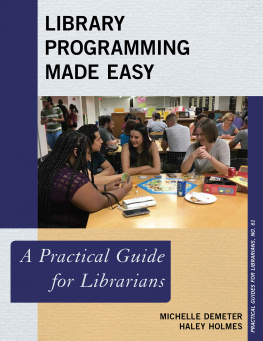
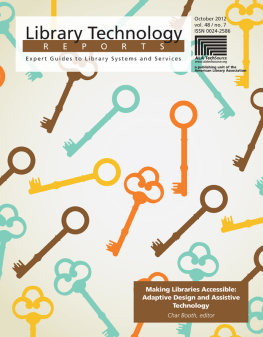
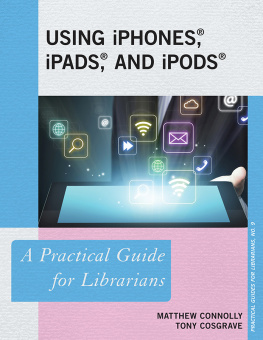
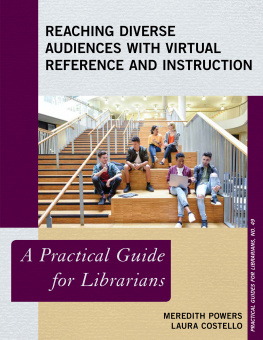
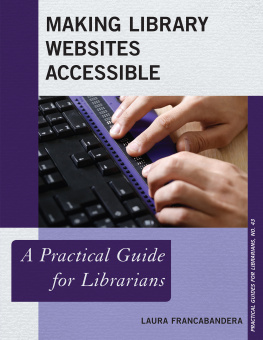
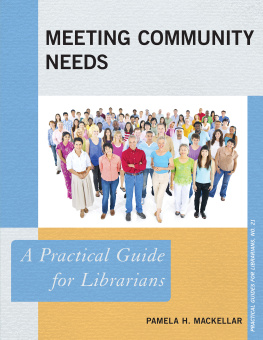
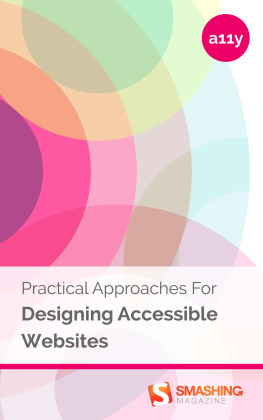
 About the Series
About the Series The paper used in this publication meets the minimum requirements of American National Standard for Information SciencesPermanence of Paper for Printed Library Materials, ANSI/NISO Z39.48-1992. Printed in the United States of America
The paper used in this publication meets the minimum requirements of American National Standard for Information SciencesPermanence of Paper for Printed Library Materials, ANSI/NISO Z39.48-1992. Printed in the United States of America